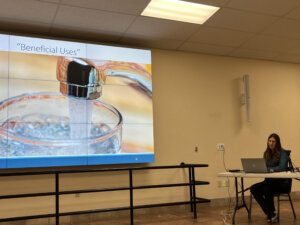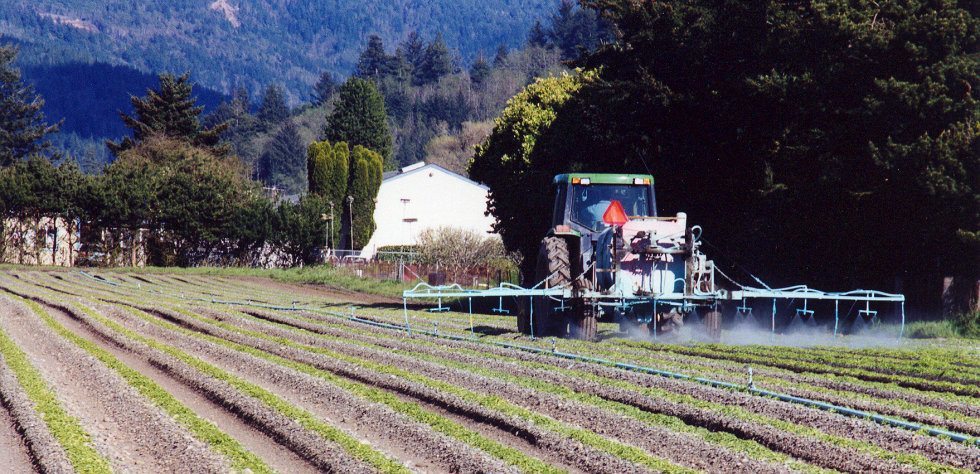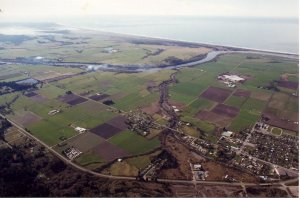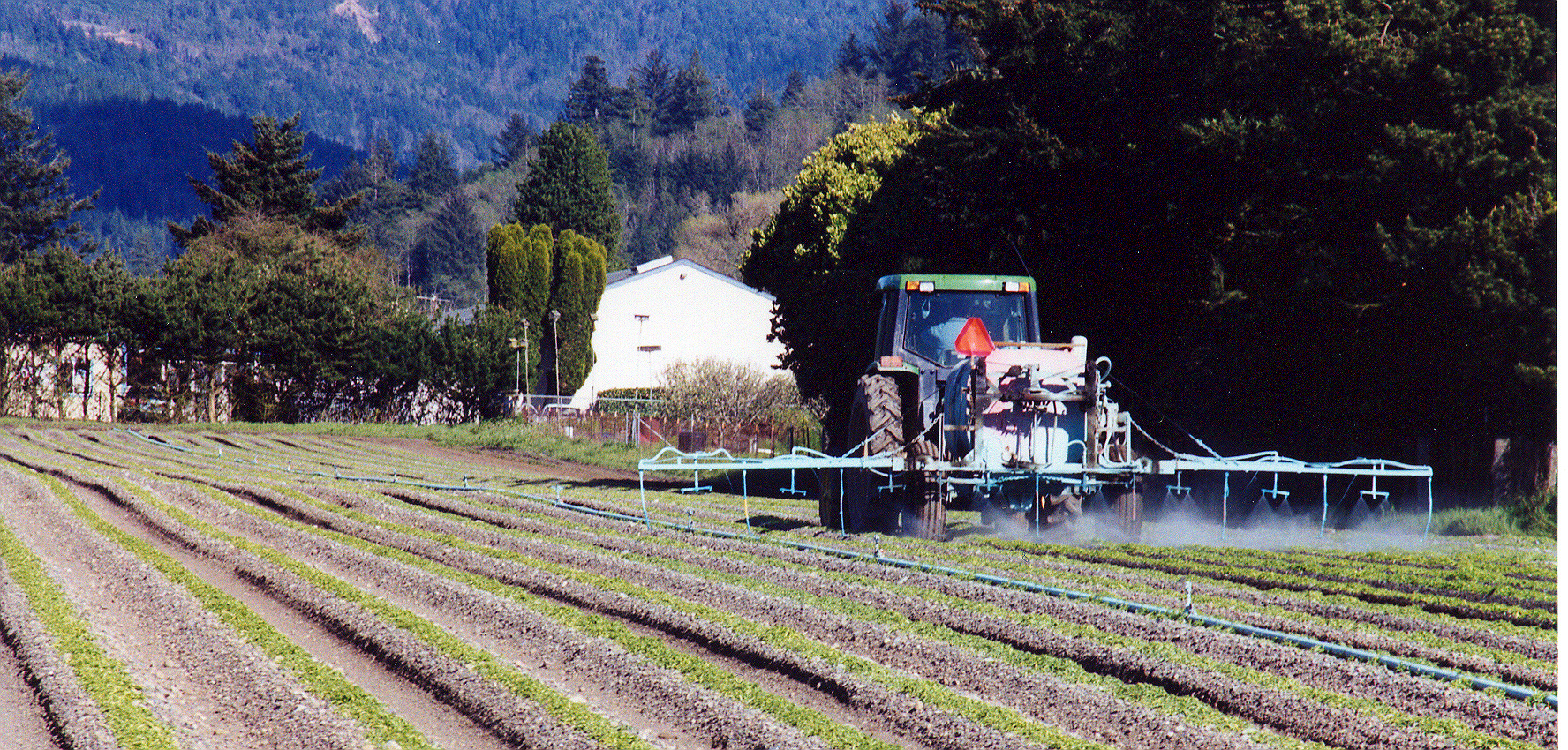By Greg King
Executive Director, Siskiyou Land Conservancy
The California North Coast Regional Water Quality Control Board has resurrected a long moribund agricultural permit process to allow Easter lily farmers, in Del Norte County, to continue polluting the vital estuary of the Wild and Scenic Smith River and nearby human populations with high concentrations of deadly pesticides. Siskiyou Land Conservancy views this process as largely illusory, and more of a lengthy distraction, given the state’s decades-long refusal to protect the Smith River estuary and prohibit illegal discharges of pollutants into protected waters.
To read SLC’s comments on the first phase of the resurrected permit process—“Findings”— go here.
You can comment on the Water Board’s process at any time. Send an email to the Water Board via Brenna.Sullivan@Waterboards.ca.gov and cc Ben.Zabinsky@waterboards.ca.gov and David.Kuszmar@waterboards.ca.gov. We also encourage you to write to your state and federal representatives.
To support Siskiyou Land Conservancy’s efforts at the Smith River estuary, please donate.
In this resurrected process, Siskiyou Land Conservancy is advocating for a permit that requires Easter lily farmers to abide by pesticide prohibitions established under California standards for organic agriculture. That is, pesticides that are not allowed for use on organic farms must be banned for use on Easter lilies, which are grown on delicate wetlands that surround the Smith River estuary. Nothing else can save the Smith River estuary from the severe instances of contamination that have been uncovered at the estuary several times since the early 1980s.
Siskiyou Land Conservancy has spent twenty years advocating for elimination of pesticide use on wetlands that surround the Smith River estuary, which is the longest involvement in the Smith River pesticide issue by any organization other than the Water Board itself.
The state’s process works like this: the Water Board, under the National Pollutant Discharge Elimination System created by the federal Clean Water Act, and with input from a Technical Advisory Group (SLC is a member of the group), creates a “permit” with certain sideboards that ostensibly will limit pollutant discharges into “waters of the state.” Like it sounds, the state is basically issuing what’s commonly known as a “permit to pollute.” The draft permit is being created in stages. The first and current stage is to create a “Findings” section of the permit; that is, what is known so far about pesticide contamination at the Smith River estuary.
For a deeper look at the crisis of pesticide pollution at the Smith River estuary, read our 40-year history of the issue go here.
Insist that the state of California prohibit all uses of toxic pesticides on lands that surround of the Smith River estuary, which is the only means of preventing the extinction of endangered species. The Smith River is California’s wildest large watershed, the last remaining undammed major river in the state. The Smith is the fourth-largest coastal river in California, and it is among the world’s cleanest rivers. The Smith River is considered to be the “crown jewel” of the federal Wild and Scenic River system—the Smith contains more miles of federally designated Wild and Scenic River status than any other U.S. watershed. The Smith River therefore, and not surprisingly, provides refugia for numerous rare and sensitive species. The importance of a healthy Smith River therefore extends up and down the West Coast of the United States, particularly California, as an island of critical biological refugia.
The Smith River is so biologically significant that the Institute for River Ecosystems at Cal Poly Humboldt has identified the watershed as a “recolonization” source, or seed bank, for Endangered Species in impaired watersheds up and down the California-Oregon coast—a designation that takes on heightened importance as West Coast salmonid populations face extinction, and as the world’s northernmost population of endangered tidewater gobies now clings to existence in the Smith River estuary. The federal government has designated this lowermost reach of the river to be “essential fish habitat” for all Pacific salmon under the Magnuson-Stevens Fishery Conservation and Management Act.
No matter the Smith River’s otherwise pristine nature, according to state and federal studies even the Smith River’s salmonid populations are shrinking. The National Marine Fisheries Service (NMFS) has identified agriculture in the Smith’s lower reaches as the primary contributor to diminishing numbers of aquatic species in the watershed. Such agricultural uses include beef and dairy production, which has resulted in significant alteration of the size, suitability, and hydrology of estuary habitat.
Yet pesticide use alone may pose the greatest threat to protected species, and to humans, in and around the Smith River estuary. At the mouth of the Smith River is the 10,000-acre Smith River Plain, an expanse of rich bottomland and seasonal wetlands that surrounds the Smith River estuary. Here farmers use heavy annual applications of agricultural chemicals to produce the nation’s most extensive crops of wholesale Easter lily bulbs, pesticides that are poisoning endangered salmon, steelhead, and other aquatic species, and the food chain that supports them.
The crisis at the Smith River estuary is so acute that in 2018 NMFS sent lily growers a federal “Section 9” letter informing them that their pesticide applications were in violation of the Endangered Species Act for illegal “take” of coho salmon. More than a century of industrial abuse of western watersheds of North America, combined with the current onset of climate change, has resulted in an extinction process that currently is accelerating throughout the West. The Smith River still serves as a wild refuge from this ongoing crisis, and this refuge needs and deserves every possible form of environmental protection. It is time for California officials to adequately perform their legal duties and enforce state and federal water laws to the fullest extent possible at the Smith River estuary. Such enforcement must result in the total elimination of toxic pesticide use on bottomlands that surround the Smith River estuary. Barring such elimination, humanity could watch even as the Smith River’s heralded but endangered aquatic species succumb to extirpation and extinction.




